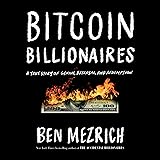Bitcoin Unveiled: Deconstructing the Digital Currency Revolution
Imagine a world where every online purchase, every transfer of funds, required the approval of an intermediary. This often comes with inherent fees, potential delays, and the implicit trust that our financial details remain secure. For decades, this has been the standard paradigm, but the underlying friction and vulnerabilities within this centralized model spurred a quest for something fundamentally different. As the accompanying video succinctly outlines, the very structure of our traditional payment systems, reliant on banks and credit card companies, introduces layers of cost and potential points of failure that many innovators sought to circumvent.
The vision of a peer-to-peer electronic cash system, one that removes the need for these trusted third parties, long captivated cryptographers and computer scientists. A significant hurdle in achieving this vision was the notorious “double spending problem,” a critical challenge where a digital token could theoretically be spent more than once. This dilemma fundamentally undermined the integrity of any proposed digital currency, demanding an ingenious solution that could ensure scarcity and validity without a central authority vouching for every transaction.
The Genesis of Decentralization: Satoshi Nakamoto’s Revelation
The answer arrived in 2008, when an enigmatic figure or group known as Satoshi Nakamoto published a whitepaper detailing a novel approach. Nakamoto’s groundbreaking proposal laid the foundation for Bitcoin, a decentralized digital currency designed to operate without central oversight. This innovative system eschewed the traditional model of a single, authoritative ledger maintained by a financial institution. Instead, it introduced a distributed public ledger, often referred to as a blockchain, where every participant collectively validates and records all transactions.
This paradigm shift meant that any attempt to defraud the system, such as attempting to double-spend funds, would be immediately evident to the entire network. Such an aberrant transaction would be inconsistent with the distributed ledger, leading to its swift rejection by the consensus mechanism. The ingenuity of this design empowers users with unprecedented control over their financial interactions, fostering a truly peer-to-peer economy. Consequently, no single entity, whether a government, corporation, or bank, can impose arbitrary fees or manipulate the flow of value within the Bitcoin network.
Beyond Transactions: Understanding the Blockchain Mechanism
The core innovation behind Bitcoin is its blockchain, a continuously growing list of records, called blocks, which are linked and secured using cryptography. Each block contains a cryptographic hash of the previous block, a timestamp, and transaction data. This structure inherently prevents tampering with past transactions, as altering one block would invalidate all subsequent blocks in the chain, a change that would be instantly detectable by the network participants. The integrity of this immutable ledger underpins the entire trustless system that Bitcoin embodies.
Transactions initiated on the Bitcoin network are broadcast to all nodes, then collected by “miners” who compete to validate these transactions and add them to a new block. This validation process involves solving a complex computational puzzle, a mechanism known as Proof-of-Work (PoW). The first miner to solve the puzzle earns the right to add the new block to the blockchain and is rewarded with newly minted Bitcoin and transaction fees. This robust consensus mechanism ensures that the network remains secure and decentralized, preventing any single party from gaining undue control.
Economic Principles of Bitcoin: Scarcity and Monetary Policy
A crucial aspect of Bitcoin’s design, and a significant departure from traditional fiat currencies, is its predetermined and finite supply. As the video mentions, Bitcoin is engineered to have a maximum limit of 21 million coins ever in circulation. This scarcity is a fundamental tenet of its monetary policy, directly addressing inflationary concerns inherent in systems where central banks can print unlimited currency. The rate at which new Bitcoin are introduced into circulation decreases approximately every four years through “halving” events, where the mining reward is cut in half.
This predictable, deflationary model contrasts sharply with the discretionary monetary policies of central banks, which can lead to currency devaluation over time. The fixed supply of Bitcoin makes it a potentially attractive store of value, drawing parallels to digital gold. While the concentration of ownership by early adopters or large institutional players might raise concerns, as highlighted in the video, this limited supply remains a defining characteristic that shapes its long-term economic outlook and speculative value.
Navigating the Digital Frontier: Volatility and Adoption
The journey of Bitcoin has been marked by significant volatility, a characteristic common to young, emerging markets and disruptive technologies. Early adopters experienced both astronomical gains and precipitous losses, reflecting the nascent stage of this digital asset. This inherent price fluctuation, while challenging for some, also represents opportunities for others who understand the market dynamics and risk profiles associated with cryptocurrency investments. The market’s immaturity necessitates a thorough understanding of its unique economic drivers.
Despite its volatility, Bitcoin has steadily moved beyond its initial niche, expanding its utility and adoption. From purchasing everyday goods and services at a growing number of online and physical retailers to facilitating international remittances with lower fees, its practical applications are broadening. Institutional interest has surged, with major corporations and financial entities exploring integration and investment in this transformative technology. This evolution signifies a maturation, albeit an ongoing one, for the world’s premier digital currency.







